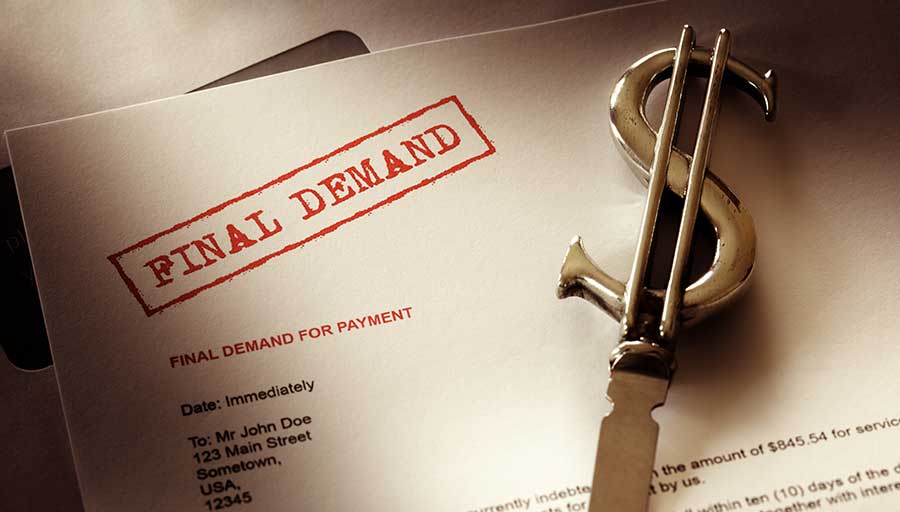Like many business owners, you have been getting cards, letters, emails, phone calls, etc., about the Employee Retention Credit (ERC).
I personally have received notices portending to be from the IRS, the Small Business Administration, even from my bank, letting me know that I “may qualify for a “grant of up to $26,000 per employee.” They all advise me that “funds are limited” and that I need to “move quickly.”
History of the Employee Retention Credit
The ERC came about in March of 2020 as part of the CARES Act, and then was expanded greatly in December 2020 by the Consolidated Appropriations Act of 2021, which among other things eliminated the ban on the ERC if a taxpayer received a paycheck protection program (PPP) loan.
Congress then expanded the ERC to the last two quarters of 2021 in the American Rescue Plan Act of 2021, enacted on March 11, 2021, and, added, a new section to the Internal Revenue Code, (§3134). The IRS has placed 94 frequently asked questions on its website and issued a 102-page notice, Notice 2021-20, on March 1, 2020, purportedly to explain the 2020 ERC.
As if that weren’t enough, on April 2, 2021, the IRS issued Notice 2021-23 concerning the ERC for the first two quarters of 2021. At 17 pages, it is easy reading compared to the previous 102-page notice. According to the IRS press release accompanying Notice 2021-23, Congress then rescinded the ERC for most businesses for the fourth quarter of 2021.
For the most part the ERC is a 50% credit against Qualified Wages (up to $10,000 per employee per quarter) in 2020. For 2021 the Credit was in increased to 70% of Qualified Wages per Quarter. It is limited to a single quarter of 2020 and the first three quarters of 2021.
So, an Qualified Employee, with maximum Qualified Wages, would count as $5,000 in 2020, and $21,000 ($7,000 per quarter for three quarters) in 2021, thus the “up to $26,000” language in the calls and letters.
The Employee Retention Credit was intended to compensate employers who kept employees on their payrolls through the COVID-19 pandemic. It is hard to believe that the pandemic hit almost four years ago, but you may recall the flood of laid-off workers overloading unemployment offices.
This was one of the reasons that the CARES Act was passed — and it was passed in a hurry. Congress didn’t really think it through, and the modifications didn’t really help. As a result, it has been called the single greatest tax fraud target in U.S. history.
Biggest Fraud in History
The IRS has been choked with claims, some legitimate, most not. The IRS is trying to disrupt a pop-up industry that encourages small businesses and nonprofits to claim the once-obscure credit and receive up to $26,000 per employee.
The Wall Street Journal has reported that aggressive marketing by such firms is driving a flow of ERC refund claims that has overwhelmed the tax agency.
Faced with overwhelming fraud and abuse, the IRS is fighting back. They have announced that new claims for the employee retention credit, or ERC, won’t be processed until at least 2024. There will also be tougher scrutiny to an existing queue of more than 600,000 requests.
The IRS will allow employers with pending claims to withdraw them and will let many repay their refunds if they no longer think they qualify.
NOTE: if you fell for a marketing pitch from a “credit mill,” this is an excellent opportunity to consult with a firm that really understands your qualifications and consider withdrawing your claim while there is still time.

Credit: stock.adobe.com
Andrii Yalanskyi
What is Really Happening?
I attended a webinar with IRS Commissioner Danny Werfel, who said, “We are taking these dramatic steps because the IRS is increasingly alarmed about honest small-business owners being scammed by unscrupulous actors, we could no longer tolerate growing evidence of questionable claims pouring in following the onslaught of misleading marketing from promoters.”
We have reviewed claims prepared by the “credit mills” that have been full of errors and filed by employers that aren’t eligible. To receive the tax credit, you must must show a significant decline in revenue or that a government order fully or partially suspended their operations.
If your business didn’t have the required revenue drop, you must show that a government order, directly suspended your operations. Since most alarm companies were considered critical infrastructure, they weren’t directly closed by shutdowns.
We have been working on getting clarification on eligibility for our clients whose operations were significantly impacted by closures of their customers (i.e. a fire alarm company whose service and inspection revenues fell because their restaurant customers were closed).
What Should You Do?
Until we get definitive word, we are not moving forward with claims for our clients. We are not worried; there is still plenty of time to file.
Even though the IRS has added the ERC to its “Dirty Dozen” list of common tax scams, claims keep pouring in. Over the life of the Employee Retention Credit, the IRS has received 3.6 million claims for it, about 15% of them in the past 90 days.
The IRS says it is still receiving 50,000 claims each week, more than twice the average volume since March 2020.
As of March 2023, the IRS had paid more than $150 billion in ERC claims. Treasury data suggest that the figure is now $230 billion, or roughly triple the original congressional estimates. The ERC will cost the government more this fiscal year than the mortgage interest deduction and charitable deduction combined.
Thousands of cases have been referred for audits. Officials warn that employers face potential penalties, interest, and even criminal charges, if they claimed the credit but weren’t eligible. The tougher scrutiny it plans to give currently pending will materially increase standard wait times for refunds.
Many employers should expect to receive requests for documentation, which could prompt some to withdraw their claims. The IRS has strongly indicated that they will work with taxpayers who have received payments and want to return them.
In my experience, it is best to have your tax pro work with them instead of waiting for the IRS to reach out to you.
“ERC assistance companies,” including payroll companies and many firms that didn’t exist before the pandemic, typically charge their clients a portion of the refund. The IRS says taxpayers should avoid firms using that business model.
The promoters typically do calculations of the credit but often don’t prepare or sign the tax returns. This should be a warning sign. If they are so sure about your eligibility, why won’t they sign the return? And they often rely on business owners to determine whether a government order fully or partially suspended their operations—usually the key factor for ERC eligibility.
Officials said they want to give business owners a chance to re-evaluate their decisions to file ERC claims. The IRS published a new eligibility checklist to help employers determine whether they qualify.
My advice is to sit tight for a while and let things unwind a bit. Not only do you have plenty of time to file a legitimate claim, the IRS will also pay you interest on the refund if you are truly eligible.
Mitch Reitman is the managing principal of Reitman Consulting Group, Inc., and is a member of the SSI Industry Hall of Fame. He can be reached at MReitman@Reitman.us.
- IRS Suspends Processing of Employee Retention Credits - September 26, 2023



